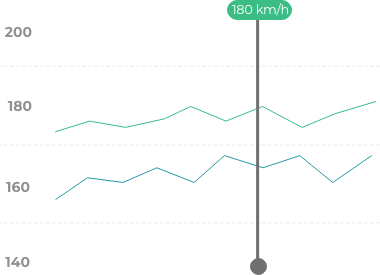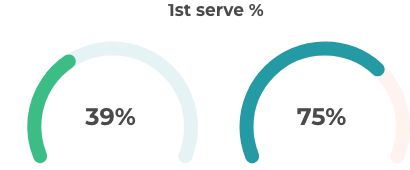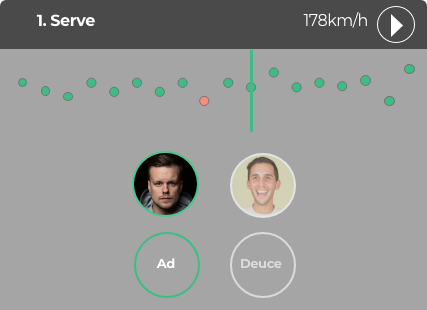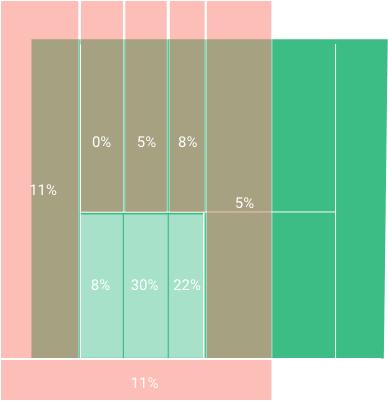Match analysis: Match opening
In order to be able to interpret your match statistics properly, we introduce you selected analysis examples here.
Featured focus areas

We want to give you an understanding of how to work with the match summary (statistics and video in match mode) using different analysis focuses. They should give you a feeling for how you can best interpret the data and thus extract the most important insights for your training work. In this article we kick off this series with the match opening.
In pro tennis, over 60% of the points are decided within 0-4 shots. There will also be many short rallies in your players' matches. It is therefore important to focus on the serve, return and direct follow-ups.
Statements on service quality
You should first pay special attention to the serve. After all, it is the only stroke that your opponent cannot influence.
How good was its quality throughout the match? Take a look at stats like 1st and 2nd serve percentages and average speeds of the 1st and 2nd serve. Compare the number of aces in the match with values from past matches. You can find them in the development area in the Match Balance section.
💡Tip: Did you know that you can filter all statistics at set level? Just swipe down the screen in your Match Summary and select the sets that should be included.
Also check whether the power of the serves could be kept constant throughout the match. To do this, jump into the Speed Graph and filter by serve. If the graph shows large variations, you might want to work on the consistency of your serve. In the speed graph you can also find the highest service speeds of both players in the match.

Serve + 1
Next, look at one of the most important patterns in tennis. Was it possible - on own serve - to put the opponent in trouble with the first attacking stroke? Of course, the serve ratio is relevant here as well.
☝🏼By the way: For comparison, the pros on the tour aim for an average rate of over 60% in the match.

It can also be interesting to look at serve placement. Does your player vary the serve appropriately or were you able to identify a weakness in the opponent's game and follow through with an appropriate service strategy throughout the match? In the Placement Map, use the shot filter to show only the serves. By swiping the control panel upwards, you can even choose between advantage and deuce side.

💡Tip: Click on the field! This is how you change the way how impact points will be displayed in the Placement Map. The relative distribution in the different impact zones can be extremely revealing.

Another good way to analyse the Serve +1 pattern is to use the corresponding video filter in the player. Here you can see all the serves and returns of the selected player in a row and without a break. By quickly stringing these sequences together, you get a good feeling for how this pattern has been played over the course of the match.
Return + 1
By the way, you can apply the same analytical approach 1:1 to return + 1. Look at the return rate in the Match Stats. Jump directly to the Placement Map and filter according to the returns this time!
Did the returns have a good length and could the opponent be put under pressure? For example, look at all the out-of-bounds returns directly in the video to identify possible sources of technical error. To do this, navigate with the control panel to the red dots - they mark all shots that did not go into the field - and click on the play button. Alternatively, there is also a corresponding video filter for the Return + 1 pattern.
⚠️ Attention: The connection of data and video is only enabled in Wingfield Pro accounts and Wingfield Coach accounts. You can upgrade to Pro at any time in the app menu. The conditions and what you have to do to become a verified Wingfield Coach can be found here.
📖 This might also be interesting for you
Optimal match opening – all fine and good. From then on, however, the goal is to play the dominant role in the rallies. Therefore, also have a look at the article on offensive play.